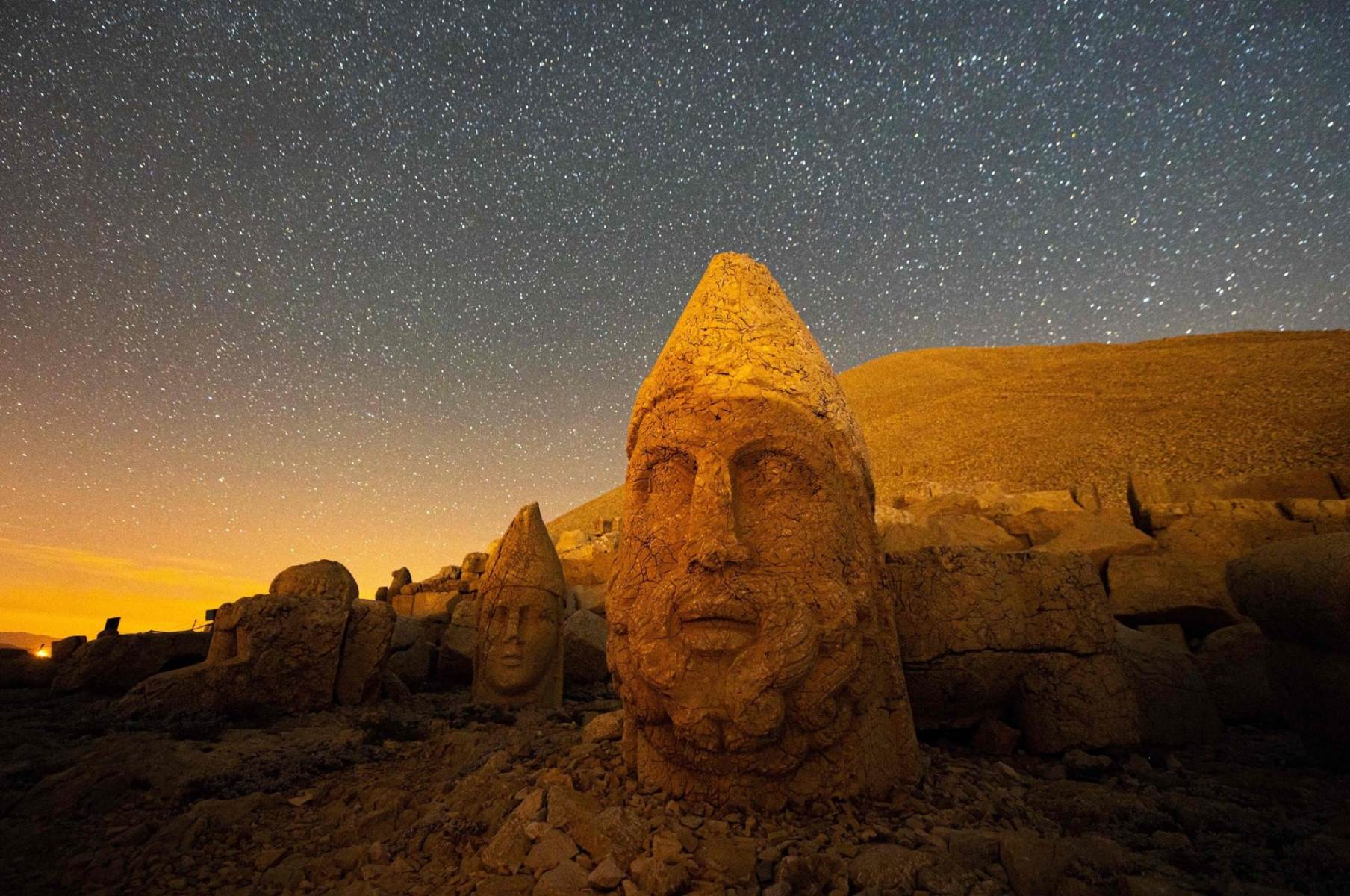Mystery Of Mount Nemrut’s Stone Heads At Sunrise

Have you ever wondered about the mystery of Mount Nemrut's stone heads at sunrise? Nestled in southeastern Turkey, Mount Nemrut stands as a testament to ancient civilizations. At the summit, colossal stone heads greet the dawn, casting long shadows and igniting curiosity. These statues, remnants of the Kingdom of Commagene, offer a glimpse into a world long gone. Why were they built? What stories do they tell? Watching the sunrise here feels like stepping back in time. The golden light illuminates each face, revealing intricate details and sparking imagination. Ready to uncover the secrets of this UNESCO World Heritage site? Let's dive in!
The Enigmatic Stone Heads of Mount Nemrut
Mount Nemrut, located in southeastern Turkey, is home to one of the most mysterious and awe-inspiring archaeological sites in the world. The stone heads, part of a larger complex built by King Antiochus I of Commagene, have fascinated historians and travelers alike. Watching the sunrise over these ancient statues is an experience like no other.
Why Visit Mount Nemrut at Sunrise?
Experiencing Mount Nemrut at sunrise offers a magical view that enhances the mystery and beauty of the stone heads. The early morning light casts a golden hue over the statues, making them appear almost otherworldly. Here are some reasons why sunrise is the best time to visit:
- Golden Light: The first rays of sunlight illuminate the stone heads, creating a stunning visual effect that highlights their intricate details.
- Peaceful Atmosphere: Fewer tourists visit at dawn, allowing for a more serene and contemplative experience.
- Cooler Temperatures: The early morning hours offer a respite from the heat, making the hike up the mountain more comfortable.
- Spiritual Experience: The quiet and beauty of the sunrise can make the visit feel almost spiritual, adding to the sense of mystery surrounding the site.
The History Behind the Stone Heads
Understanding the history of Mount Nemrut adds depth to the experience. The site was built by King Antiochus I in the 1st century BC as a tomb-sanctuary. The stone heads are part of a larger complex that includes a burial mound, terraces, and statues of gods and animals.
- King Antiochus I: The ambitious ruler who commissioned the site, hoping to create a lasting legacy.
- Tomb-Sanctuary: The complex was designed as a place of worship and a burial site for the king.
- Hellenistic Influence: The statues reflect a blend of Greek and Persian artistic styles, showcasing the cultural diversity of the Commagene Kingdom.
- Astronomical Alignment: Some researchers believe the site was designed to align with celestial events, adding another layer of mystery.
The Stone Heads: A Closer Look
The stone heads at Mount Nemrut are not just impressive in size; they are also rich in symbolism and detail. Each statue represents a different deity or figure, and their placement and design hold significant meaning.
- Zeus: The king of the gods, depicted with a majestic and commanding presence.
- Apollo: The god of the sun, music, and prophecy, often shown with a serene and thoughtful expression.
- Hercules: The hero known for his strength, depicted in a powerful and dynamic pose.
- Eagle and Lion: Symbolic animals representing power and protection, guarding the site.
Tips for Visiting Mount Nemrut
Planning a visit to Mount Nemrut requires some preparation to make the most of the experience. Here are some tips to help you get the most out of your trip:
- Start Early: Aim to arrive at the site before dawn to catch the sunrise.
- Dress Warmly: Even in summer, the early morning temperatures can be chilly at the summit.
- Bring a Flashlight: The hike up the mountain is dark before sunrise, so a flashlight is essential.
- Stay Hydrated: Carry enough water, especially if visiting during warmer months.
- Hire a Guide: A knowledgeable guide can provide valuable insights into the history and significance of the site.
Nearby Attractions to Explore
While Mount Nemrut is the main attraction, the surrounding area also offers several interesting sites worth exploring. Extend your trip to fully appreciate the region's rich history and natural beauty.
- Arsameia: An ancient city with ruins and inscriptions that provide a glimpse into the Commagene Kingdom's past.
- Cendere Bridge: A Roman bridge still in use today, showcasing impressive ancient engineering.
- Karakus Tumulus: Another burial mound with statues and columns, offering additional historical context.
- Ataturk Dam: One of the largest dams in the world, providing stunning views and a contrast to the ancient sites.
Capturing the Perfect Photo
Photographing the stone heads at sunrise can be a rewarding challenge. The changing light and dramatic landscape offer endless opportunities for stunning shots.
- Golden Hour: The best light occurs just after sunrise, casting a warm glow on the statues.
- Different Angles: Experiment with various perspectives to capture the statues' grandeur and detail.
- Foreground Elements: Include natural elements like rocks or plants to add depth to your photos.
- Patience: Wait for the perfect moment when the light and shadows create the most dramatic effect.
The Magic of Mount Nemrut Awaits
Mount Nemrut's stone heads offer a unique blend of history, mystery, and natural beauty. Watching the sunrise over these ancient statues is an experience like no other. The stone heads stand as silent guardians of a bygone era, each one telling a story of a time long past.
Visiting this site isn't just about seeing the statues; it's about feeling the history and culture that surrounds them. The sunrise adds a magical touch, casting a golden glow that makes the entire scene breathtaking.
Whether you're a history buff, a nature lover, or just someone looking for a unique travel experience, Mount Nemrut has something special to offer. Don't miss out on the chance to witness this incredible sight. Pack your bags, set your alarm early, and get ready for an unforgettable adventure.

